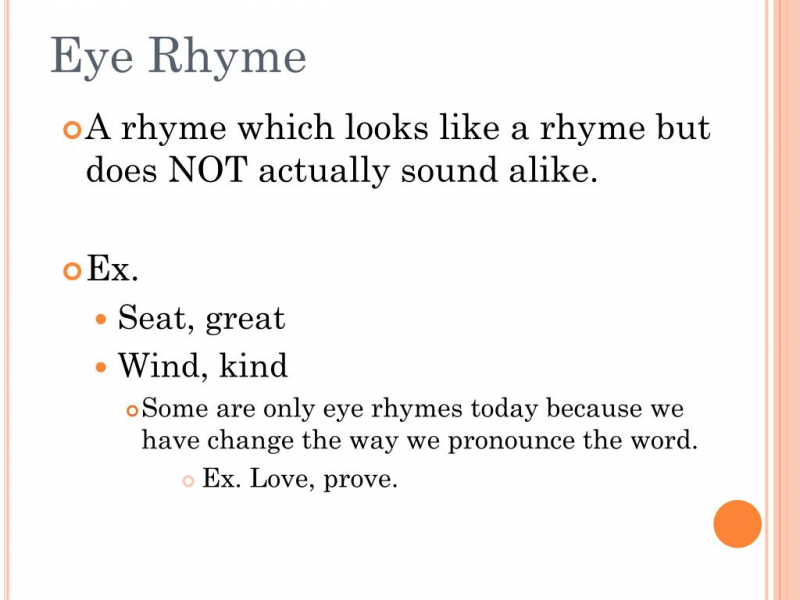Eye rhyme

An eye rhyme, also known as a visual rhyme or a sight rhyme, is a rhyme when two words have the same spelling but distinct pronunciations. The names "Sean Bean" (pronounced "Shawn Been") and the "Stone of Scone" are two examples (pronounced "stone of skoon"). Many earlier English poems, notably those written in Early Modern and Middle English, include rhymes that were once true or complete rhymes but are now perceived as eye rhymes by modern readers due to changes in pronunciation, particularly the Great Vowel Shift. We refer to these as historical rhymes. Linguists employ historical rhymes to reassemble ancient languages' pronunciations; Old Chinese, whose writing system does not explicitly reference pronunciation, makes use of historical rhymes particularly frequently.
Poems from centuries past that rhymed sometimes no longer do so. They now function as eye rhymes. The poet did not intend for this to happen. Some poems were written with the intention of rhyme centuries ago, according to the Wikipedia entry on eye rhymes. Due to changes in how words are pronounced over time, some of these rhymes have evolved into eye rhymes. Examples include "laughter", "come", "home", and "ocean". Absolutely not rhyme and dime or eye and by.







